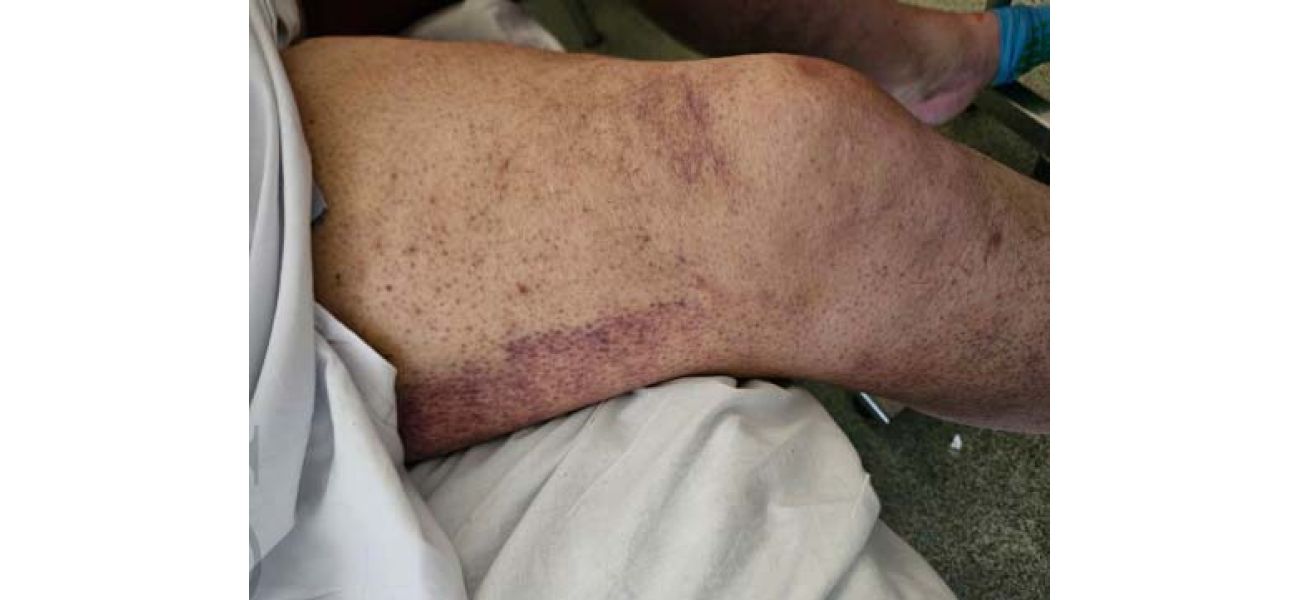Australian man diagnosed with scurvy as a bleak sign of current times.
Experts warn that the rising cost of living could lead to the return of a disease commonly associated with seafarers in the past.
October 22nd 2024.

Scurvy, a disease that has long been associated with sailors from the past, has re-emerged in modern times with an Australian man being diagnosed with it. Experts believe that the increasing cost of living may be partially responsible for this resurgence of the disease. Scurvy is caused by a deficiency of vitamin C and can have serious consequences if left untreated.
The man, who is in his early 50s and from Western Australia, had also undergone weight loss surgery. However, he had been unable to afford the necessary supplements and had also reduced his intake of fruits and vegetables. At times, he even skipped meals altogether, leading to a lack of essential nutrients in his diet. As a result, he developed a painful rash on his legs, had blood in his urine, and was anemic. Even after undergoing various tests, the rash continued to spread, perplexing doctors.
Further investigation revealed that the man had been struggling financially and had neglected his diet as a result. He was unable to afford the prescribed supplements and had stopped taking them altogether. This led to a complete lack of vitamin C in his body, which ultimately led to his diagnosis of scurvy. The medical journal BMJ Group described this as a "bleak sign of the times."
Fortunately, the man was successfully treated with daily doses of 1000mg of vitamin C, along with vitamin D3, folic acid, and multivitamin supplements. However, if left untreated, scurvy can be fatal. The authors of the report noted that scurvy is often seen as a disease of the past, but it is still prevalent in developed countries. The rising cost of living and poor dietary habits are contributing factors, along with other risk factors such as obesity, previous weight loss surgery, and low-income status.
Scurvy was first reported in ancient times but became a major concern during the Renaissance era when sailors at sea were deprived of proper nutrition for long periods. These days, other risk factors for scurvy include alcoholism, smoking, eating disorders, and certain medications that interfere with vitamin C absorption. Signs of scurvy can appear as early as a month after a daily intake of less than 10 mg of vitamin C.
In 2016, cases of scurvy were also reported in Australia, with a dozen patients at Westmead Hospital in Sydney being diagnosed with the disease. This highlights the importance of maintaining a healthy diet and ensuring an adequate intake of essential nutrients. Scurvy may be a disease of the past, but it can still have devastating effects if not properly addressed.
The man, who is in his early 50s and from Western Australia, had also undergone weight loss surgery. However, he had been unable to afford the necessary supplements and had also reduced his intake of fruits and vegetables. At times, he even skipped meals altogether, leading to a lack of essential nutrients in his diet. As a result, he developed a painful rash on his legs, had blood in his urine, and was anemic. Even after undergoing various tests, the rash continued to spread, perplexing doctors.
Further investigation revealed that the man had been struggling financially and had neglected his diet as a result. He was unable to afford the prescribed supplements and had stopped taking them altogether. This led to a complete lack of vitamin C in his body, which ultimately led to his diagnosis of scurvy. The medical journal BMJ Group described this as a "bleak sign of the times."
Fortunately, the man was successfully treated with daily doses of 1000mg of vitamin C, along with vitamin D3, folic acid, and multivitamin supplements. However, if left untreated, scurvy can be fatal. The authors of the report noted that scurvy is often seen as a disease of the past, but it is still prevalent in developed countries. The rising cost of living and poor dietary habits are contributing factors, along with other risk factors such as obesity, previous weight loss surgery, and low-income status.
Scurvy was first reported in ancient times but became a major concern during the Renaissance era when sailors at sea were deprived of proper nutrition for long periods. These days, other risk factors for scurvy include alcoholism, smoking, eating disorders, and certain medications that interfere with vitamin C absorption. Signs of scurvy can appear as early as a month after a daily intake of less than 10 mg of vitamin C.
In 2016, cases of scurvy were also reported in Australia, with a dozen patients at Westmead Hospital in Sydney being diagnosed with the disease. This highlights the importance of maintaining a healthy diet and ensuring an adequate intake of essential nutrients. Scurvy may be a disease of the past, but it can still have devastating effects if not properly addressed.
[This article has been trending online recently and has been generated with AI. Your feed is customized.]
[Generative AI is experimental.]
0
0
Submit Comment





